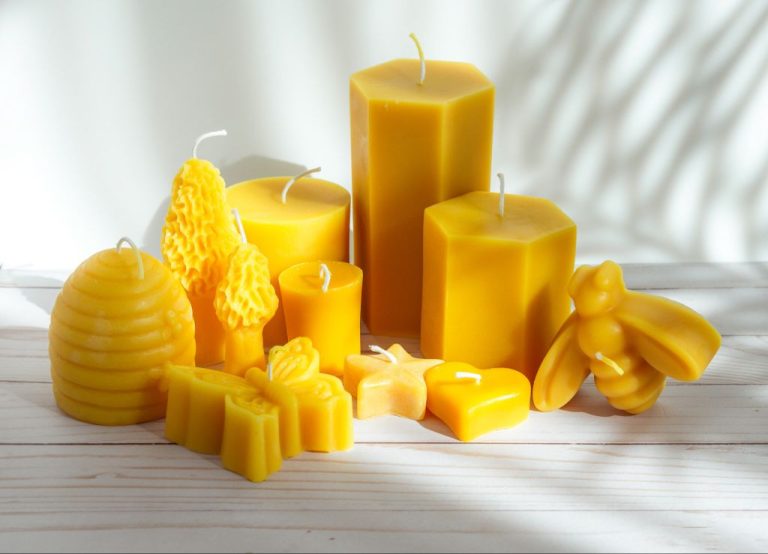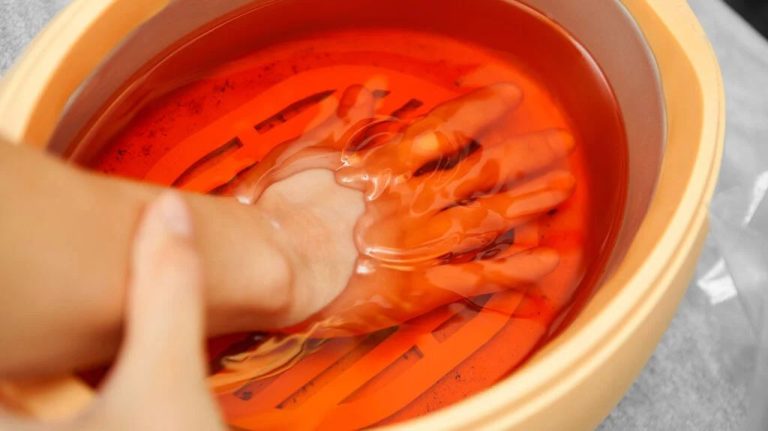Is Melt And Pour Soap Considered Organic?
What is Melt and Pour Soap?
Melt and pour soap is a ready-made soap base composed of fatty acids, glycerin, and other natural ingredients. The base is produced through the soap making process of combining oils and an alkali solution like lye, then cooked, molded, and sliced into blocks (Source). Manufacturers melt these soap bases, allowing hobbyists and crafters to purchase them in bulk.
To make melt and pour soap, all you need to do is cut a portion of the soap base, melt it down, add fragrance, colorants or exfoliants if desired, and pour into molds. Once cooled and hardened, the soap is ready to use. This makes the process much faster and easier compared to cold process soap making, where you must carefully measure and combine oils and lye from scratch. However, you have less control over the ingredients with a premade base (Source).
The main advantage of melt and pour is convenience – no need to handle lye, cure soaps for weeks, or master complex techniques. But cold process allows endless recipe customization and use of raw ingredients like milks, sugars, clays, etc. The finished texture and lather may differ as well. Ultimately, melt and pour is ideal for beginners looking for an accessible craft, while cold process satisfies those seeking total creative control (Source).
Organic Certification Standards
For a soap to be labeled as organic, it must meet certain standards and obtain certification from an accredited certifying agency. The main organic certification standards for personal care products in the United States are from the USDA and ECOCert.
The USDA National Organic Program (NOP) has guidelines for organic labeling of agricultural products, including some ingredients used in soap like oils and aloe vera. However, the USDA NOP does not cover cosmetic products like melt and pour soaps (Botanie Soap).
ECOCert is an international organic certification body that covers cosmetics and has an “Ecocert Organic” label specifically for cosmetics containing 95-100% organic ingredients. To be ECOCert certified, at least 95% of physically processed agro-ingredients must come from organic farming and at least 10% of all ingredients must be from organic farming (ECOCert).
Some key requirements for organic certification include:
– Tracking ingredients back to their source farm/location
– Following approved production and manufacturing processes
– Keeping detailed records and submitting to inspections
– Paying certification fees
– Renewing certification annually
Without proper organic certification, a melt and pour soap cannot legally be marketed as “organic” in the United States.
Organic Oils vs Base Ingredients
Melt and pour soap starts with a premade soap base rather than oils. This base is then melted, colored, scented, and molded into bars.

While the oils used to create the soap base may be organic, the base itself is seldom certified organic. This is because the base undergoes chemical processing like adding lye that disqualifies it from organic certification [1].
Very few melt and pour soap bases actually contain certified organic oils. Most use a mix of organic and non-organic oils [2]. Truly organic melt and pour bases are rare and expensive.
So while it’s possible to create an organic melt and pour soap by adding organic colorants and fragrances, the base itself is seldom organic certified.
Organic Labeling Controversy
There is some debate around whether melt and pour soap can truly be labeled as “organic” if the base ingredients themselves are not certified organic. According to the Federal Trade Commission, “Marketers that choose to label their products as organic must follow standards set by the U.S. Department of Agriculture’s National Organic Program. Products labeled as ‘organic’ must contain at least 95% organic ingredients.”
However, most commercial melt and pour soap bases are made up of detergents rather than organic plant oils. Even if a manufacturer adds organic oils or other certified organic ingredients to an synthetic soap base, the final product cannot technically meet the 95% threshold to qualify for an organic label (source).
The FTC provides strict guidance around organic labeling and marketing claims. If the core ingredients in a melt and pour soap base are not organically sourced and certified, marketers run the risk of facing legal action if they use the term “organic” prominently on packaging or in product descriptions. Instead, they may opt for terms like “made with organic oils” or “contains organic ingredients” to accurately represent the product without misusing the organic label.
Sourcing Organic Base Ingredients
When looking to source an organic melt and pour soap base, there are a few options available. Many online soapmaking suppliers offer organic bases, like Organic Creations and ALEXES on Amazon. It’s important to verify that the base is certified organic by looking for seals from certifying agencies like the USDA Organic seal.
Organic certification involves adhering to strict standards over the full supply chain. Suppliers must use only organically grown ingredients and avoid any prohibited substances. They also undergo audits to verify compliance. When purchasing an organic base, look for clear labeling indicating the organic certification. Reputable suppliers will provide documentation confirming they follow organic regulations.
In addition to the organic base ingredients, also check that any additives like colors, scents or botancials are certified organic. This ensures the final soap can be accurately marketed and labeled as organic. With care taken to source verified organic ingredients, melt and pour soap makers can create true organic products.
Adding Organic Additives
Many soapmakers like to customize their melt and pour soap by adding organic additives like herbs, oils, and clays. These natural additives can provide benefits like exfoliation, aroma, and color without compromising the organic status of the soap. According to Bulk Apothecary, some of the most common organic botanical additives for melt and pour soap are lavender buds and rose petals.
When working with organic additives, it’s important to source them from reputable suppliers who can verify the organic status, such as Bramble Berry. While ingredients like herbs and essential oils can be organic, some additives like clays and natural colorants currently don’t have organic designations.
As long as the melt and pour soap base itself is made with certified organic oils, adding small amounts of organic herbs, oils, and unprocessed additives will not affect the organic status of the final product. However, best practices are to maximize the organic ingredients whenever possible. The Chemist’s Corner recommends selecting organic additives certified by organizations like Oregon Tilth, Quality Assurance International or the Soil Association.
Environmental Impact
Compared to cold process soap making, melt and pour soap is considered more environmentally friendly due to significantly reduced water usage and waste production. Cold process soap making generates a substantial amount of chemical waste and rinse water from the saponification process. In contrast, melt and pour soap bases have already undergone saponification and do not require this production step, saving water and avoiding chemical byproducts.
However, there are still some environmental concerns around the base ingredients used in melt and pour soap bases. Many commercial bases contain palm oil, which has links to deforestation when not sourced sustainably. Some eco-conscious crafters try to find palm-free bases or use bases made with organic oils. Companies are also working to develop more compostable and biodegradable melt and pour bases to further reduce the environmental impact.
Overall, melt and pour soap crafting is less intensive than cold process from an environmental standpoint. But crafters can take additional steps like choosing organic or sustainably sourced bases, avoiding excess packaging, and composting any leftover scraps. With some care taken in material selection, melt and pour soaps can be a fairly green handmade product.
Conclusions
While melt and pour soap cannot be 100% USDA certified organic due to the base ingredients, there are ways to maximize the organic ingredients and minimize environmental impact.
The base used in melt and pour soap goes through a chemical process that uses ingredients not found in nature. Therefore, it cannot be considered 100% organic according to USDA standards. However, many brands use plant-derived ingredients like palm oil and coconut oil as the foundation.
You can look for melt and pour bases made with organic oils. While not certified organic, these bases contain more organic material. Some artisan soap makers also produce their own organic bases.
Additionally, you can maximize the organic additives like essential oils, botanicals, clays etc. Looking for additives certified organic by third parties like the Organic Materials Review Institute can help identify authentically organic ingredients.
While not 100% certified organic, following these practices can produce melt and pour soap that is made from predominantly organic materials. This reduces the overall environmental footprint compared to soap made entirely from conventional ingredients.
Expert Tips
If you want to ensure you’re getting the purest melt and pour soap base, here are some tips:
- Look for bases made with organic oils like olive, coconut or shea butter. Organic oils ensure no pesticides or chemicals were used in production.
- Avoid bases with artificial colors, fragrances or preservatives. Opt for bases with essential oils for scent.
- Select transparent bases over opaque ones so you can see the ingredients. Transparent bases tend to be more pure.
- Read the ingredient list closely and research any unfamiliar ingredients. Simplicity is best.
- Contact manufacturers and ask about their sourcing and production methods.
When adding your own organic additives:
- Use organic herbs, clays, essential oils etc. Check labels for certified organic status.
- Avoid adding synthetic fragrances, dyes, glitter or decorations. These undermine the organic nature.
- Research all additives to ensure they are non-toxic and environmentally sustainable.
- Keep additives minimal. The more you add, the less “organic” the final product.
Further Reading
If you’re interested in learning more about organic melt and pour soapmaking, here are some helpful resources:
Resources for organic melt and pour:
- The Natural Baby Company Blog – Tips for making organic melt and pour soap
- Anne’s Soap Making Resources – Guide to sourcing organic melt and pour soap bases
- Treehugger – Why make your own organic melt and pour soap?
DIY organic melt and pour tips:
- DIY Natural – Beginner’s guide to organic melt and pour soapmaking
- Lovely Greens – Easy DIY recipes using organic melt and pour bases
- Modern Soapmaking – Tips for customizing organic melt and pour soaps
With some research and experimentation, you can create wonderful organic melt and pour soaps. The above resources are a great starting point for learning more about this craft.




